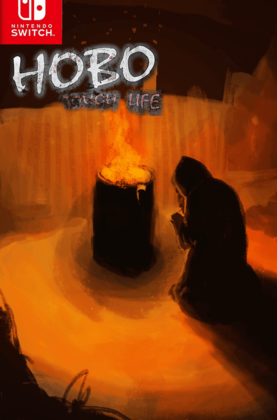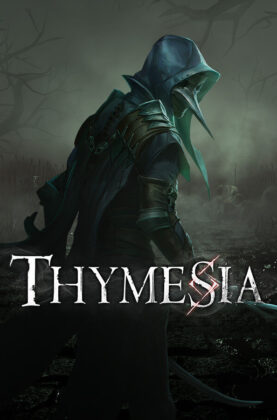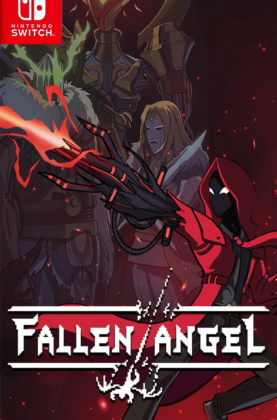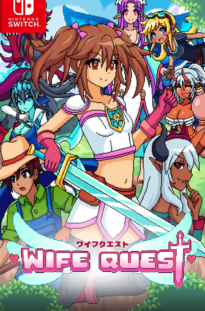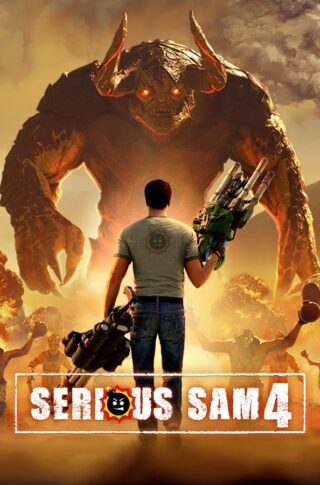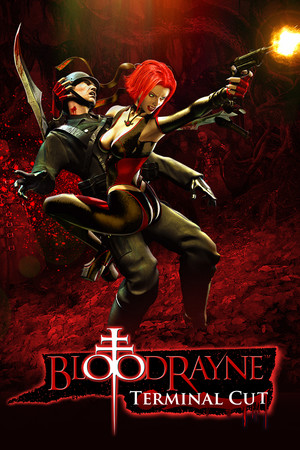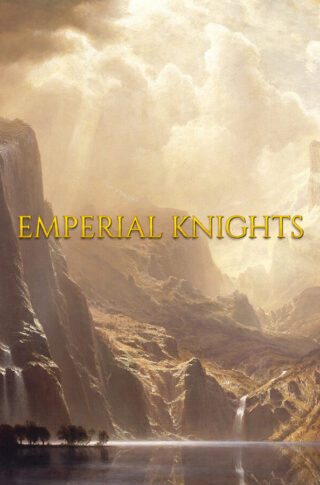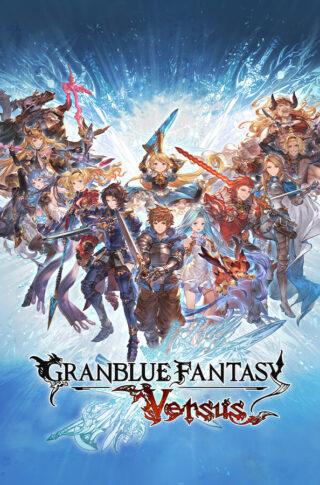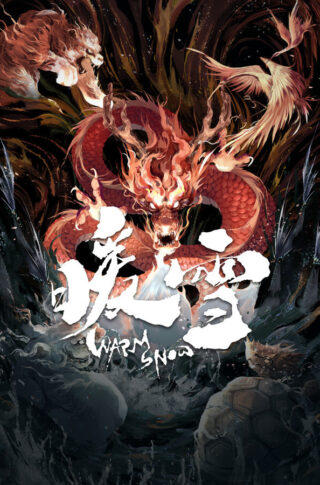
The Hundred Year Kingdom Switch NSP Free Download
The Hundred Year Kingdom Switch NSP Free Download Unfitgirl
The Hundred Year Kingdom Switch NSP Free Download Unfitgirl If you like empire-building games like Civilization, or city builders like Cities: Skylines, but you don’t have the hundreds of hours of spare time lying around, then firstly, hello fellow millennial! I hope you’re getting as utterly tired of the endless hustle that modern life demands as I am. Secondly, I’ve found a treat for you! It’s called The Hundred Year Kingdom. This humble little non-violent empire builder is the work of a solo indie developer out of Japan, and while it is very rough in places (the localisers completely forgot to translate the Japanese here and there, and the art is on the ugly side of primitive), the core gameplay loop that this thing offers is nuanced and strategic, and it’s only asking for around half an hour of your time per play session. That’s the equivalent of around four turns in Civilization. When you start a new game you’re given 100 turns (each turn representing one year), and your goal is to make the best of that time to establish a flourishing kingdom. You can take one action per turn, and each action involves building something on a small grid of spaces. At first you’ll only have one square on the grid, and the stuff you’ll be building is simple; turning a featureless plain into a plot of farm land, or throwing down a mine to increase your nation’s building resources. Those simple, “level 1” developments don’t provide much, though, so on subsequent turns you can build more advanced structures over the top – vineyards, orchards Unfitgirl.COM SEXY GAMES

Factories and so on – which provide escalating resources in turn. Or, instead, you can use the turn to unlock another square on the grid (assuming you have the resources) and then start to build it up too. Eventually, you’ll start building great wonders, and those buildings will offer massive boosts to the quantity of resources generated by particular types of facilities. One great wonder boosts the production of vineyards. Another boosts the benefit gained from castles. At the end game, when you’ve purchased up all the land and are deep into developing all of it, success rests on combining these great wonders with a large number of specific buildings, and to do this really well, you basically have to be thinking about the end game from the very first turn. There are three resources to manage – food, production, and culture, and different buildings will generate different amounts of each. There is no lose state in The Hundred Year Kingdom; you need resources to buy land and upgrade buildings, but there’s no way to go backwards. If you get really stuck, you can just cycle through a turn or two to build up enough resources to make an expensive next purchase. Rather than aiming for some kind of competitive victory, in The Hundred Year Kingdom, you’re chasing scores. If your strategy clicks into place, and you make all the right decisions about what to build, where on the map to build it, and the order that you build them
Construct buildings
Then the resources will stream in and at the end of the 100 years you’ll be told that you’ve created an empire that will flourish into perpetuity. Don’t do so well and your people will be scrapping out a meagre existence instead. The lesson I took from this is that the world’s problems can be solved by putting in more vineyards. I think that’s a fair assessment of the state of the world, in hindsight. Jokes aside, The Hundred Year Kingdom is, really, a pretty straightforward puzzle game that challenges your ability to plan several moves ahead, manage resources, and build things in the right order. It’s more than challenging enough in that those really good scores require some advanced mastery of the systems and intricacies of the game, and there’s a range of different landscapes to play on, which each have their own unique quirks and challenges. Finally, there are a number of different “goddesses” that you can choose between at the start of a game, which provide various minor bonuses, and they do level up from one game to the next, so there’s some progression in there that helps you get progressively better scores (without feeling like the whole thing’s a pointless grind). They don’t add that much to the overall experience, but they’re fun, and the art design of them is pleasant enough that it makes up for the hyper-pixelated nature of the buildings and facilities that you’re laying down. Kayak VR: Mirage
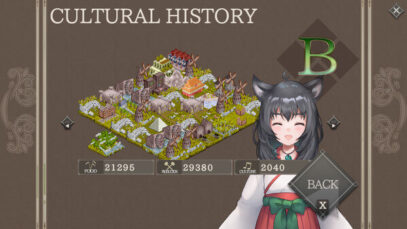
The Hundred Year Kingdom is the most rare and precious of things: it’s a smart, engaging, and thoughtful game, but also one that is highly accessible, playable, and respects the player’s time. It is clearly a solo project, but it’s also weird how a solo developer has managed to figure out how to do that when so many developers 1,000x their size remain committed to wasting our lives on their content. Want the satisfaction of a turn-based strategy game, but without the huge time investment they typically ask of you? The Hundred Year Kingdom has your back. One hundred turns, one hundred years—that’s all you get to build a thriving civilization from nothing. A single game will rarely run more than half an hour, but it’s remarkable how much satisfaction there is in this short-form strategy premise. The Hundred Year Kingdom eschews complexity in favour of something deceptively simple. Playing out on a six-by-six grid, each turn lets you pick one action to undertake: develop an undeveloped tile, upgrade a developed one, or do nothing. Each structure generates resources each turn (food, production, and culture), and each new development costs a set amount of the same to build. The goal, then, is to try to rack up your per-turn production, so that when your hundred years are up, you leave behind a civilization with full coffers and happy people.
Elements like diplomacy, war, and calamities
This framework may seem basic at first, but there’s a surprising amount of depth and a puzzle-like quality to the whole thing. Each structure can branch off in different directions that prioritise different resources: an empty plain can turn into either a farm for food, or a mine for production; the farm can then become either a farm estate (more food) or a pasture (a split of food and production), and so on. By the late game, there’s enough variety to make a satisfying puzzle of balancing resource needs with the limited space available. Wonders and natural phenomena throw another wrinkle into this mix. The former are the final forms of each building branch, which not only generate a huge amount of resources on their own, but boost the affects of certain other constructs—the catch is that you can only build one of each wonder. At the same time, things like mountains and oceans have (often detrimental) effects on surrounding tiles, while also providing unique bonuses and shortcuts to some late-tree builds. The result is a game that grows surprisingly complex the more you dig into its nuances. Early games tend to revolve around sort-of-random building placement and an effort to cast a wide net and have one of everything. That’ll work okay (especially on the relatively easy maps available from the jump), but it’s far more effective to think ahead—like, way ahead—to what kind of wonders you want to build Killing Floor 2
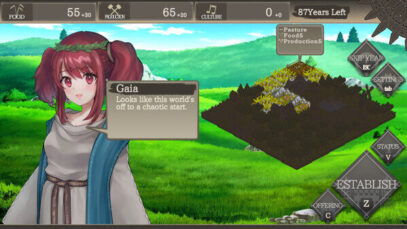
what’s going to work well on your current map, and think about what’s going to work best with this. The Hundred Year Kingdom doesn’t have a specific win condition or fail state; you’ll play your hundred turns, one way or another. Instead, it’s all about scoring: the amount of resources you’ve managed to collect by the end of a game determines how well your civilization will thrive in your absence, and in turn, a final rating of your success as a guiding hand. Chasing higher scores works well as a little extra incentive to play better—though the intrinsic satisfaction of the game loop is its own driver for improvement—but for something more tangible, there’s a gradual drip-feed of unlockable buildings, new maps, and a light levelling system for the goddesses who support you with various bonuses. It can be a little rough around the edges, though. The goddesses who feature so prominently in promotional materials have surprisingly little presence in the game itself, save a few passive bonuses and annoying tendency to offer words of encouragement each turn that feel slightly patronising (and get very repetitive, even in the space of a single game). Their designs are nice enough—anime-style renditions of goddesses like Freyja, Gaia, and Arianrhod, and their portraits balance nicely with the pixel-art playing field, but they feel like a missed opportunity for something more substantial.
Lets you build and care for a civilization
I’ve also run into the occasional random snippet of untranslated dialogue, which isn’t the end of the world given the dialogue isn’t great to begin with, but it’s jarring all the same.Even so, The Hundred Year Kingdom has become my go-to when I want a quick little game to unwind with before bed (that inevitably ends up keeping me up way later than I should, because of that “one more turn!” itch). It’s pocket-sized strategy game whose minimalist systems hide a surprising amount of depth and soothing, satisfying way of scratching that civilization-building itch. Call me boring, but I love a nice, calm, peaceful city-builder. I don’t want any conflict, I don’t want any random events, I don’t want any chaos — none of that. Just me and a nice patch of land where I can build freely. Actually, strike that — it might be nice to have someone to keep me company while I build. You know, to help me out here and there, like giving me pointers or perks. In fact, if they’re some sort of authority figure, they could tell me more about what I’m supposed to do (which is always nice while playing a new game). Maybe they’ll have an entertaining personality, and we’ll get to know each other, and… oh, is my city built already? Time to go? Oh… okay. But we were just getting started… So… that’s the vibe in The Hundred Year Kingdom Kindergarten 2
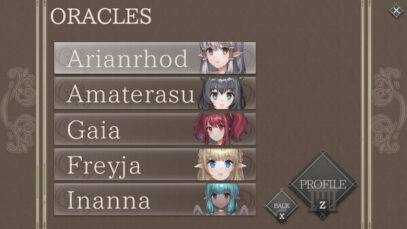
“innovative turn-based city-builder” where players “work together with a mythical young goddess to develop a peaceful civilization over the course of a century.” Available on both PC and Switch, The Hundred Year Kingdom is a unique experience that will intrigue anyone who chases subtle novelty and/or sweet waifus. With calming visuals, a soothing soundtrack, and chill yet cerebral gameplay that slowly unfolds over time, The Hundred Year Kingdom is simultaneously easy to recommend but hard to explain (but in a good way). As is probably obvious by the title, The Hundred Year Kingdom is a turn-based city-builder where players have 100 years to build up the best city possible. Players can construct or upgrade one building per turn, each turn taking one in-game year. Time isn’t the only thing that’s limited — land is at a premium, and tiles will only allow specific building types on them. It seems a little tricky at first, but no worries — you’re not alone! One of five goddesses from different cultures — Amaterasu, Arianrhod, Gaia, Freyja, and Inanna — is there to support you on your city-building journey. How will you raise a thriving civilization from the ground up? When it comes to the city-building aspect, The Hundred Year Kingdom is seemingly simple at the beginning but unfolds tremendously as time goes on.
In simplest terms, there’s a swatch of land with blank tiles that can be filled with different buildings. Each building will grant players a set amount of food, production, or culture points per turn (or some combination thereof) — farmlands give food, factories give production, etc. Some buildings will influence the output of others, and upgrading buildings can make them more powerful to the point of turning into a legacy building, such as the Taj Mahal or Hanging Gardens. These buildings will increase the production rate of specific facility types at the expense of its previous form’s output. A careful balancing act could certainly describe The Hundred Year Kingdom! As for the waifu aspect, The Hundred Year Kingdom’s lovely ladies have certain effects on the board that will subtlety play out. Every so often, the goddess will gift players points depending on their strengths; for example, Amaterasu tends to gift production points, while Gaia gifts food. More often than not, though, their most notable affect is their dialogue, as each goddess goes through an emotional journey over the course of the century and takes players with them. At first, they’re overjoyed to see their “master,” chattering about the possibilities of a brand new world; as time passes, they get a little more personal, praising your hard work and even flirting.
Add-ons (DLC):The Hundred Year Kingdom Switch NSP
| – | – | – | – | – | – |
| – | – | – | – | – | – |
| – | – | – | – | – | – |
| – | – | – | – | – | – |
OS: 64-bit Windows 10 or MacOS 10.15: Catalina (Jazz)
Processor: Intel Core i7-4790 or AMD Ryzen 3 3600
Memory: 12 GB
Graphics Card: RTX 2080S/RTX 3070 or AMD Radeon RX 6800 XT
VRAM: 8 GB
Storage: SDD (700 MB)
INPUT: Nintendo Switch Joy con, Keyboard and Mouse, Xbox or PlayStation controllers
ONLINE REQUIREMENTS: Internet connection required for updates or multiplayer mode.
Requires a 64-bit processor and operating system
NOTE: THESE STEPS MAY VARY FROM GAME TO GAME AND DO NOT APPLY TO ALL GAMES
- Open the Start menu (Windows ‘flag’ button) in the bottom left corner of the screen.
- At the bottom of the Start menu, type Folder Options into the Search box, then press the Enter key.
- Click on the View tab at the top of the Folder Options window and check the option to Show hidden files and folders (in Windows 11, this option is called Show hidden files, folders, and drives).
- Click Apply then OK.
- Return to the Start menu and select Computer, then double click Local Disk (C:), and then open the Program Files folder. On some systems, this folder is called ‘Program Files(x86)’.
- In the Program Files folder, find and open the folder for your game.
- In the game’s folder, locate the executable (.exe) file for the game–this is a faded icon with the game’s title.
- Right-click on this file, select Properties, and then click the Compatibility tab at the top of the Properties window.
- Check the Run this program as an administrator box in the Privilege Level section. Click Apply then OK.
- Once complete, try opening the game again
NOTE: PLEASE DOWNLOAD THE LATEST VERSION OF YUZU EMULATOR FROM SOME GAMES YOU MAY NEED RYUJINX EMULATOR
- First you will need YUZU Emulator. Download it from either Unfitgirl, .. Open it in WinRar, 7ZIP idk and then move the contents in a folder and open the yuzu.exe.
- There click Emulation -> Configure -> System -> Profile Then press on Add and make a new profile, then close yuzu
Inside of yuzu click File -> Open yuzu folder. This will open the yuzu configuration folder inside of explorer. - Create a folder called “keys” and copy the key you got from here and paste it in the folder.
- For settings open yuzu up Emulation -> Configure -> Graphics, Select OpenGL and set it to Vulkan or OpenGL. (Vulkan seems to be a bit bad atm) Then go to Controls and press Single Player and set it to custom
- Then Press Configure and set Player 1 to Pro Controller if you have a controller/keyboard and to Joycons if Joycons. Press Configure and press the exact buttons on your controller After you’re done press Okay and continue to the next step.
- Download any ROM you want from Unfitgirl, .. After you got your File (can be .xci or .nsp) create a folder somewhere on your PC and in that folder create another folder for your game.
- After that double-click into yuzu and select the folder you put your game folder in.
- Lastly double click on the game and enjoy it.

